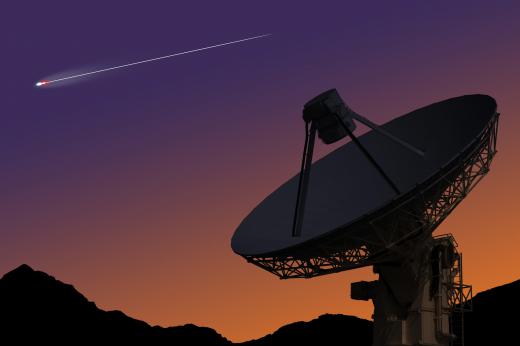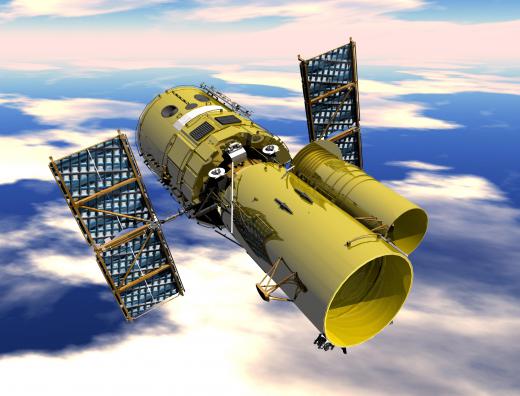What is Barnard's Star?
 Michael Anissimov
Michael Anissimov
Barnard's star is the fourth closest star to the Sun, after the three members of the Centauri system, and the fastest moving star in the sky. It is sometimes called Barnard's Runaway Star to refer to its significant motion relative to other stars. Located in the constellation Ophiuchus, only 5.98 light years from the Earth, Barnard's Star is still not visible to the unaided eye. This is because it is a red dwarf star with only 17% the mass of the Sun and .04% as much luminosity. Red dwarfs are so faint that we are only aware of those within about 100 light years of ourselves.
Barnard's Star is currently moving in the general direction of our solar system at about 140 km/sec, and will become the nearest star besides the Sun in only about 11,700 years, at a distance of only 3.8 light years. Unfortunately, even then it will still be too dim to see with the unaided eye. Even now, the star is so faint that if it were to replace the Sun, it would have only about 100 times the luminosity of a full Moon. There is much debate over whether a red dwarf could have planets habitable to life. The "Habitable Zone" for planets around a red dwarf would be similar in distance to the orbit of Mercury. Barnard's Star has a surface temperature of only about 3000 K.

From 1963 to about 1973, some astronomers believed that there was a Jupiter-sized planet in orbit around Barnard's Star, based on tiny wobbling motions supposedly observed in comparisons of photographic plates. Unfortunately for this group, later attempts to verify the wobbling were not successful. Much higher-resolution observations with the Hubble Space Telescope have also ruled out observable wobbling. Barnard's Star may still have an Earth-sized planetary companion, but definitely not a Jupiter-sized one in any close orbit.

The proximity and possible planetary companion of Barnard's Star caused it to be popularized in the 1960s as a target of an interstellar probe. A design was conceived for one probe, called Daedalus, by the British Interplanetary Society. Such a probe would have been extremely expensive and powered by nuclear pulse propulsion, although it would have been achievable with the technology of the 1960s.
AS FEATURED ON:
AS FEATURED ON:













Discuss this Article
Post your comments